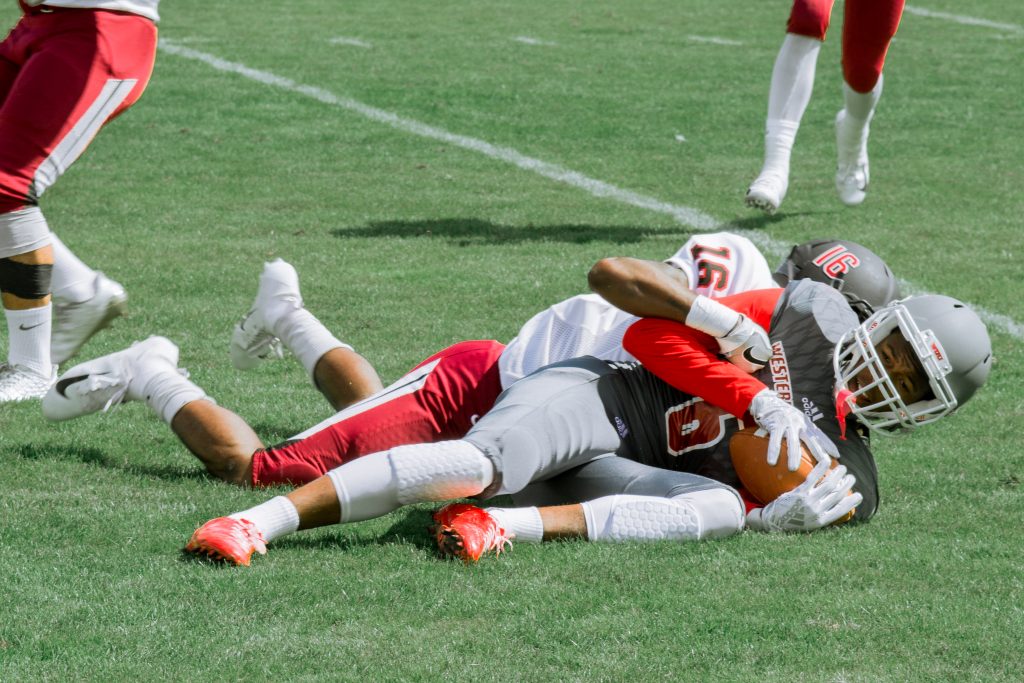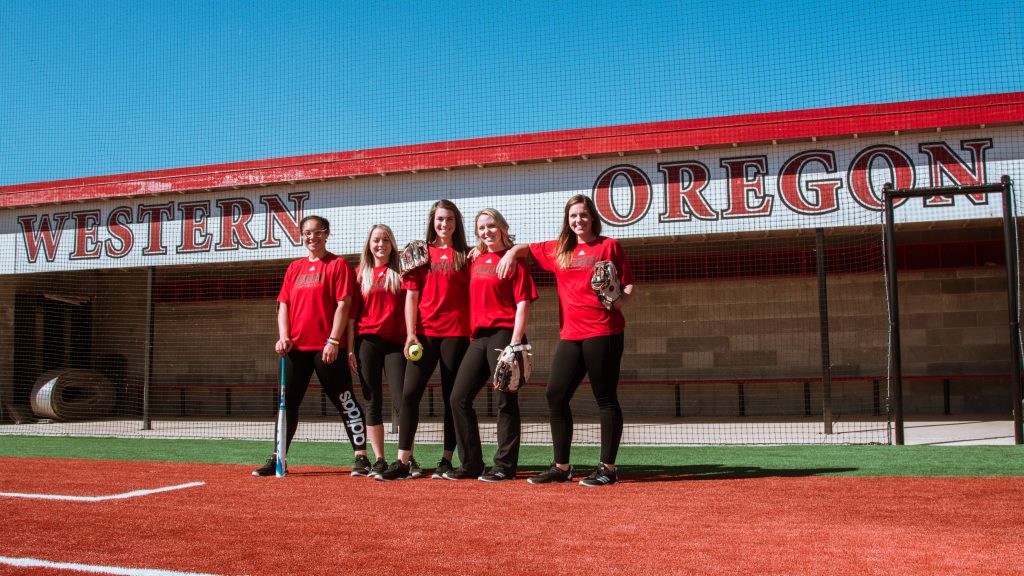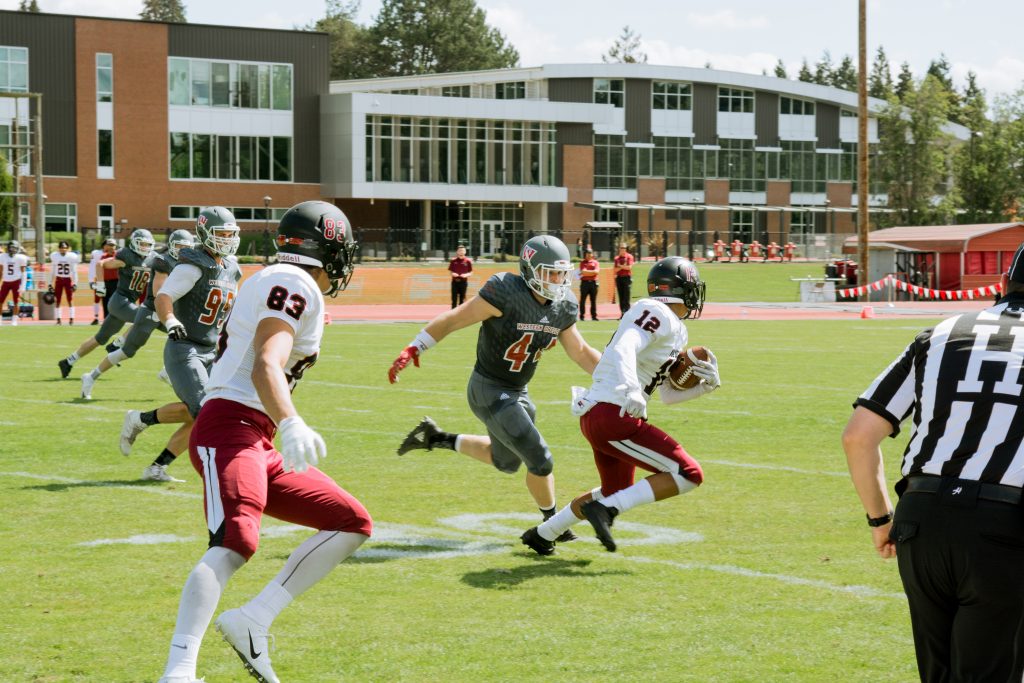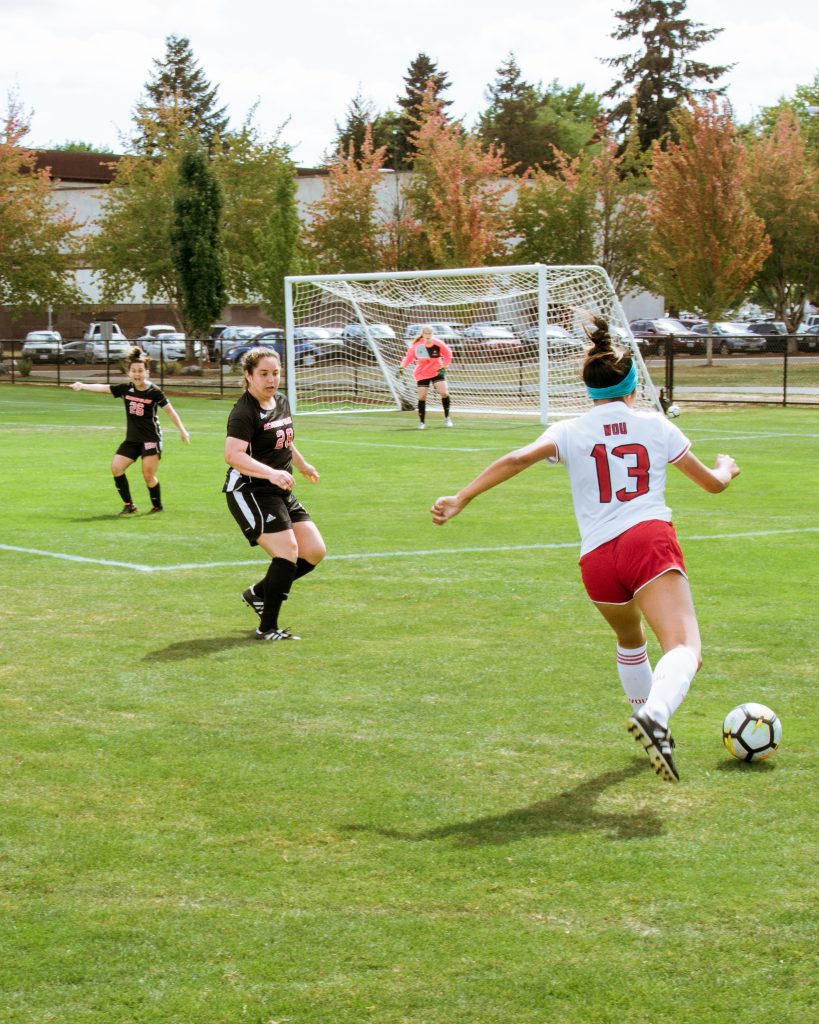
Simson Garcia | Sports Editor
5.8 seconds were left for the Wolves basketball team. Tied at 62 in a November 21 game against Humboldt State, Shelby Snook, senior guard, inbounded the ball from the side to Savannah Heugly, senior forward, who caught it at the right free-throw line. Heugly then drew a slight hesitation, dribbled past three defenders who were delayed, and extended a right-hand layup for the go-ahead score.
Heugly used her pivot foot for the slight hesitation. The pivot is fundamental in basketball and fundamentals are important to Heugly.
“I think it’s a very important piece to work on your fundamentals every day,” explained Heugly. “Because if you stop, you lose part of it, and if you lose part of that, you’re not going to be able to progress in your game.”
Basketball became a love of Heugly’s at the age of eight. After playing basketball year-round, it eventually beat out other sports, such as softball and volleyball.
“I shot everyday,” said Heugly.
As she kept shooting, she got older, more skilled and grew taller to where she’s been a stable 5-foot-11 forward since middle school.
Heugly’s mother Julie also played high school ball, at Parkrose in Portland, Oregon — just a 30-minute drive from Tualatin High School, Heugly’s school. Her mother was a standout hooper and, though she received offers from a web of colleges, she stopped playing after high school. But Heugly kept the ball bouncing and had the opportunity to apply more to her basketball future.
“She (Heugly) is ten times the player I ever was,” said Julie.
The two went head-to-head in backyard one-on-ones many times. Eventually, Heugly got the better of her mother.
“I think that I finally beat her in my junior year of high school. I think I beat her by like seven,” Heugly said. When asked if it was a changing of the guard, Heugly laughingly explained. “Yeah, she kind of said ‘well, if you can beat me then you’re fine’.”
At Tualatin, Heugly was awarded first-team all-league honors. There, she teamed with current Wolf and childhood friend Jasmine Miller, senior business major.
“(Jasmine) and I have always gotten along really well, like our chemistry works really well and we play the same position and so in high school we were always give-and-go,” Heugly said.
After high school she took basketball with her to the college level and started her collegiate career at Blue Mountain Community College. The move from Tualatin to Blue Mountain provided the next level for Heugly.
“The players there were faster, bigger, stronger and better,” explained Heugly. She nonetheless continued progressing and averaged a double-double in her sophomore year with 21.2 points per game — fourth in the Northwest Athletic Conference — and 11.3 rebounds per game. Having never scored fewer than 13 points in a single game, she earned the pair of first-team and all-defensive honors.
From Tualatin Timberwolf, to Blue Mountain Timberwolf, to Western wolf, Heugly continued to excel while the competition grew even larger. She played in all 27 games her junior year.
While leading the Wolves in scoring, 11.4, and rebounding, 6.1, averages and totals, Heugly earned an academic all-GNAC honor with a 3.65 GPA in the 2017-18 season.
As with how the pivot provides players options on what angle to shoot from, Heugly says she has options as to what she’ll do after graduation and will see where careers in chiropractics or athletic training will possibly lead her.
This June, Heugly graduates with a major in exercise science, and will pursue a chiropractic internship this summer in Tigard, Oregon. She’s also open to the possibility of coaching one day at the high school and perhaps college level.
Either way, she’d like to lean more towards sports, something that’s close to home for her, and would like to continue working with athletes.
Teaming up with Miller in her past senior season, the two worked in tandem. Often times, Miller and Heugly performed a high-low combination; one player at the top of the key feeds the ball to the person near the basket through a lob — because of their height — or bounce pass, a play NBA hall of famers Tim Duncan and David Robinson helped popularize.
The Wolves had a lot of motion plays where players were constantly moving the ball and themselves around. But their go-to was into the post to Heugly who had a few options for points.
“Everyone says my go-to move is the fadeaway,” explained Heugly. But Heugly demonstrated that one could fake out of it as someone attempts to block it, using the pivot foot.
Heugly explained her options; “You can fake the fadeaway and then go under, I’ve done that a couple times. They just fly right by you cause they’re expecting it, and then you get a wide open layup.”
Contact the author at journalsports@wou.edu
Photo courtesy of: Savannah Heugly














